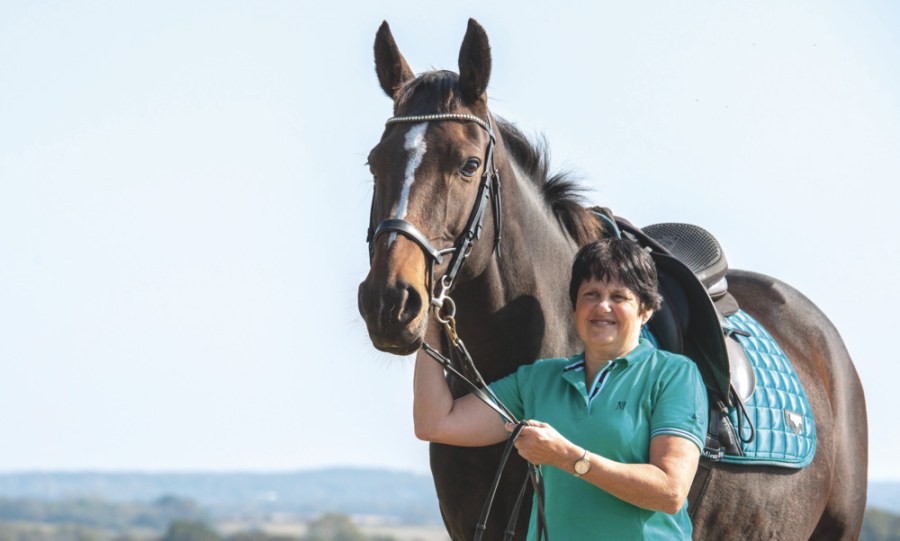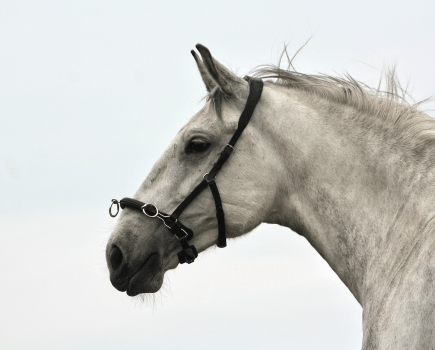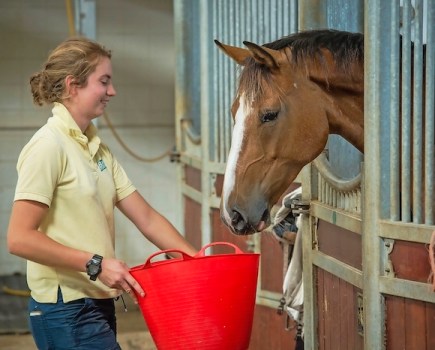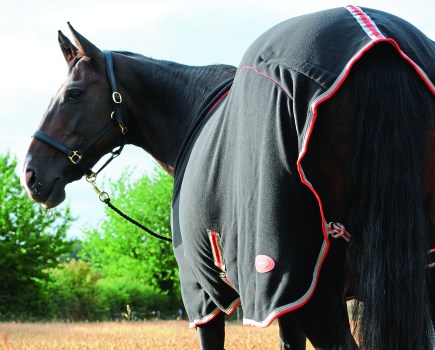Even the safest horse can be unpredictable, as Christine Patrick discovered when her usually bombproof ex-racehorse decanted her in the road and left her with a debilitating fractured spine. Julie Harding reports
Christine Patrick’s ex-racehorse Otto never put a hoof wrong. He was winning red rosettes in walk and trot dressage and was about to progress to prelim.
During hacks he would fly along the undulating South Downs, finding the sixth gear that had aided his haul of £62,000 while on the racetrack, where he ran under the name of Lesley’s Choice and would make other flat machines look ordinary.
Christine, vice chair of Hailsham Equestrian Club, had purchased the bay gelding for £600 for riding club activities after seeing him advertised in Horsemart, but Otto also turned out to be a super-safe hack, unfazed by tractors, motorbikes and the biggest lorries.
So when, in April 2015, Christine and Otto were nearing the end of a lengthy ride in company, walking sedately down Michelham Priory Road, just off the A22, nothing untoward had occurred. Christine, leading the way, turned in the saddle to chat to her friend Hilary, and that’s when it happened.
Otto reared — for the first and only time in his life. His back went from being horizontal to near vertical in a second, and Christine found herself sliding, tumbling backwards towards the tarmac.
“I landed on my back in the road,” she says. “I was winded and my left shoulder really hurt.”
Otto trotted back to the yard, giving notice that he had decanted his pilot and help arrived. The decision was taken not to wait for an ambulance and Christine was placed gingerly in a car for the 20-minute journey to Eastbourne Hospital, where she was given an X-ray.
It was while she was sitting on a bed in A&E, though, and a doctor prodded her spine that she finally received notice of the epicentre of her injury and the tell-tale signs of what turned out to be fractured T3 and T4 vertebrae as well as a hairline crack in T2 — and fractures of the thoracic spine without spinal cord injury are incredibly rare. Lady luck was clearly smiling down on Christine on that April day.
Now transferred to the Conquest Hospital in Hastings, the retail assistant was told that she would have to spend five days on her back in a bed. ‘Freedom’ from a prone position came only when a bespoke jacket — full name ‘Neck Chest Cervical Thoracic Head Orthosis Support Brace Holder’ — featuring rods front and back to stabilise her spine and prevent jarring, was brought to her bed by a nurse.
“The first time I put it on I burst into tears because wearing it was so horrible,” says Christine, whose fractures were so stable that she had at least managed to avoid the operating table.
“I ended up spending seven weeks in the jacket, but I was able to take it off at night. I couldn’t drive and I couldn’t work — at that point I was an assistant in a convenience store — and nor could I look after the horses who I was supposed to be caring for. I would walk to the local shop every day and that was about it.”
Christine was given an X-ray during week seven and the news was the best that she could have hoped for — her fractures had healed and the restrictive jacket could be consigned to history.
“The relief in taking it off was indescribable. All in all I was very lucky not to have been more badly hurt.”
Long-term consequences
It would be impossible to suffer such a serious incident without long-term consequences, however. Christine’s violent meeting with the tarmac has caused a slight curvature to the top of her spine, although regular visits to a chiropractor are helping to alleviate the arch affect.
“Sessions are ongoing and they’re not cheap,” Christine reveals. “Also, the hospital failed to recommend physiotherapy once I’d had the jacket removed. For the first couple of weeks I didn’t feel too bad, but then everything started to tighten in my back.
“After a month I was given an appointment at Eastbourne Hospital’s physio department, but all they did was give me exercises.
“Eventually my GP referred me to Sussex MSK Partnership, a local NHS organisation that manages the care and treatment of patients with bone, joint and muscle conditions. Their practitioner agreed with me — that everything around the injury had tightened.”
With perpetual pain in her shoulder, Christine, 60, still finds herself visiting a physio — which she also has to fund from her own pocket, another downside from the accident.
A further legacy can be fear. Any rider who falls from a rearing horse will ponder how it will feel to climb on board again for the first time. Will the mind’s self-sabotage be such a hurdle that even mounting will be impossible? Will the heart race and pass the 100bpm super-fast mark? Will tension and anxiety set in, as well as a feeling of nausea?
Christine thought of all these things during her recuperation, but when the time came to get back on Otto, it was as though the incident had never occurred.
“I didn’t ride for three months and I did wonder then if I would feel nervous. When the time came, though, getting back on didn’t bother me at all. I was told not to ride for three months and I stayed away for four.”
The main reason for her lack of fear was Christine’s understanding that Otto hadn’t reared out of venom or vindictiveness.
“When I rode him again afterwards he wasn’t right and would go lame behind. It turned out that he had mild kissing spines and when I thought about the accident I realised that it had probably been caused when I twisted in the saddle to talk to Hilary behind, somehow catching Otto’s spine, causing him pain and making him rear.”
Sadly, Otto ended up with a catalogue of issues, including hock trouble — legacies from the fast and ferocious racetrack.
“That problem may have been prompted by coming out of the starting stalls at speed,” Christine explains.
“The vet said that he could inject Otto’s hocks, and he wasn’t worried at all about his kissing spines, but Otto also had inflammation in the laminae of both front feet which would have caused him to walk as though on eggshells.
“I was advised that it would be unfair to try to keep him going and so I had him put to sleep. It was the kindest thing to do, but I still get upset when I think about it, and I think about him a lot.”
“You’re not going to ride again, are you?”
Christine was a relative late starter when it came to horses.
“I’d always wanted to ride, but my dad was a farm worker and we couldn’t afford a horse. It was only when I got a job in a saddlers after school that I started riding and also got my first horse — a palomino called Champagne,” she says.
After owning Otto and his successor, Ballagawan Beauty (aka Beau), Christine contented herself with exercising horses for other people rather than purchasing her own.
These days she rides two mares, cares for two ex-eventer geldings and works part time in a convenience store in Polgate.
“I only had Beau for 18 months and then I had to sell him because Stephen was so ill,” says the grandmother of six.
Stephen, Christine’s partner of 10 years, had been suffering from renal failure — polycystic kidneys to be exact, an inherited condition that eventually led to him undergoing a transplant in his late 40s. However, 18 months later his new kidneys started to fail and they had to be removed.
“During the last four years Stephen was back on dialysis, his blood pressure would drop and he was on a lot of tablets. He kept deteriorating. Dialysis wasn’t doing what it should and eventually his veins were in such a state that the blood wasn’t getting to his heart.”
Stephen died aged 55 in March 2019.
“He was so encouraging to me. He was a football ref and so he understood my passion for sport and horses. After I fell off Otto my poor mum said, ‘You’re not going to ride again, are you?’ I had to tell her that I was.
“But Stephen never even asked. Instead he went and bought me an air jacket.”










